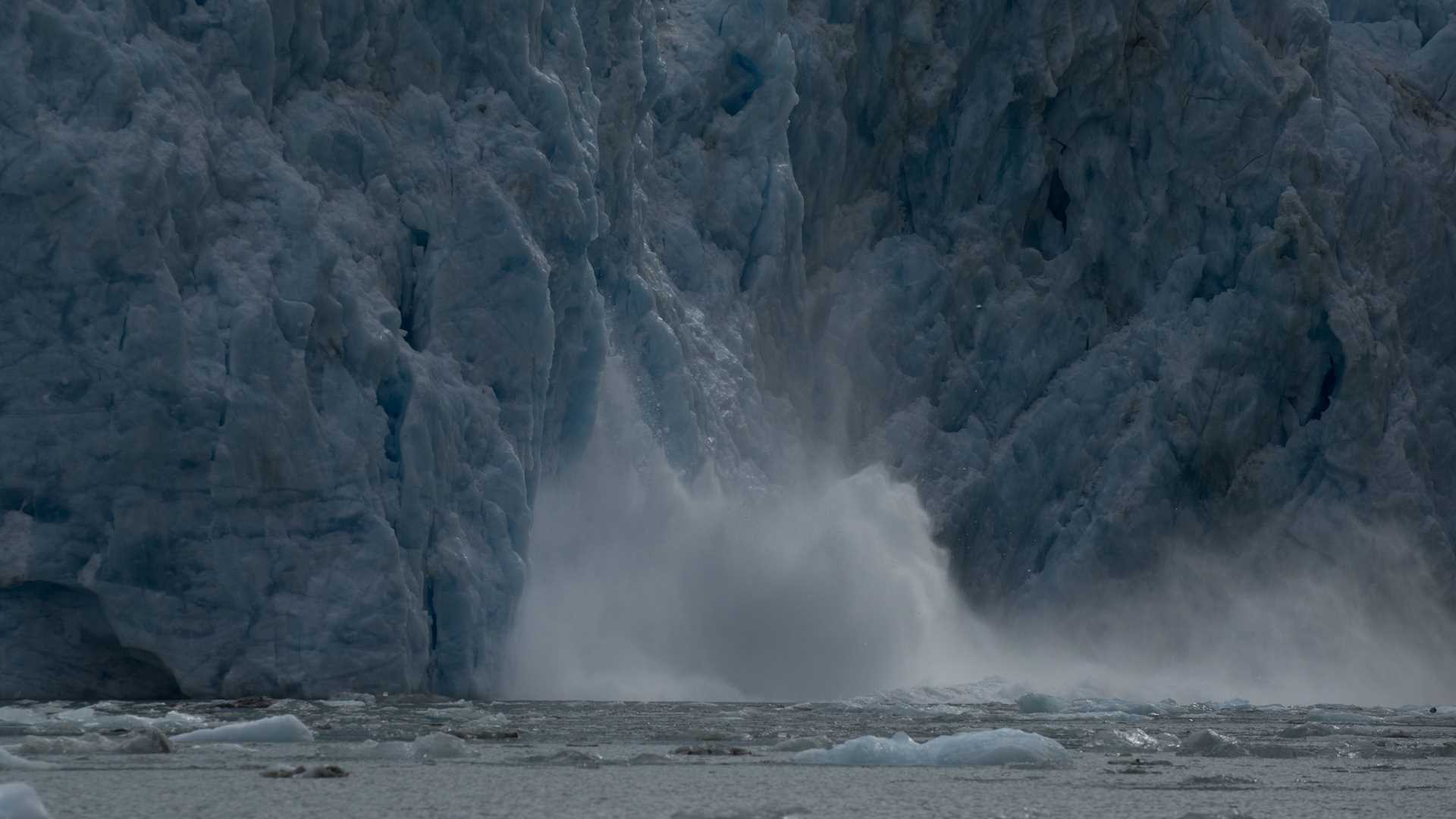We left Petersburg and the Norway Independence Festival, complete with its competitive herring toss and fur clad Vikings, in our wake last night during dinner and woke up this morning to an entirely new and different place, Endicott Arm. It was as if we went back in time and entered a landscape that existed thousands, maybe millions of years ago, full of ice, rock, and murky, green water. We were en route to the Dawes Glacier at the head of Endicott Arm, where we would witness how this vast and inspiring landscape was created.
Before arriving, we were softly awakened at 6:30 a.m. by the voice of our expedition leader, John Mitchell, alerting us to the sighting of a black bear on shore. Those who were dressed and outside by 6:45 a.m. were treated to this wonderful, wild scene of a bear browsing for breakfast on the beach. Soon after we were encountering massive icebergs, bergies (bits of icebergs) and growlers (bigger bits of icebergs) floating by the ship. Those who were on deck for the morning stretch class (as this author was) got to look up from their yoga poses to this beautiful misty scene and breathe in the fresh, moist, 40 degree air as we welcomed the day.
Fifteen hundred years-ago, Endicott Arm was full of ice, but since then the Dawes and North Dawes Glaciers have retreated 30 miles to where it is today. In its wake, it has left a 1000’ deep fjord, and 2000’ high cliffs. Above these cliffs and 9 miles back from the front of the glacier, the Stikine Ice Field dominates the landscape, crossing into Canada and at times, regulating the local weather. As part of the Tracy Arm Ford’s Terror Wilderness Area, this incredible landscape will be forever protected so all who can make it here will be able to experience it. Shortly after breakfast we were out in our inflatable DIBs, motoring to within a quarter mile of the glacier to witness its loud, thundering booms as it calved into the tidewater and feel the cool, icy air as it flowed down from the icefield.
The afternoon was spent cruising Stephens Passage, watching humpback whales and learning about bears inside, out of the rain, from naturalist, Elise Lockton. Our last evening together was spent enjoying shared photos of our week, dinner with the captain and an evening presentation on possible future trips with Lindblad/National Geographic.









